Order Psittaciformes Rank Species | Phylum Chordata Superfamily Psittacoidea Subfamily Arinae | |
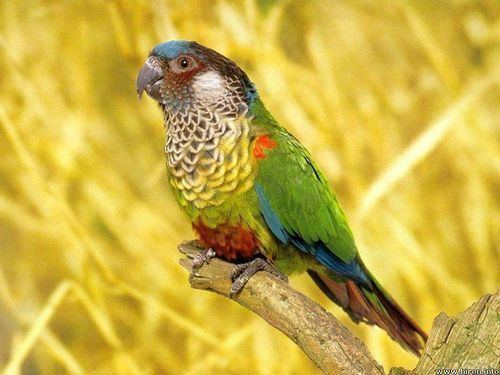 | ||
Similar Pyrrhura, Rose‑fronted parakeet, Parrot, Bird, White‑eared parakeet | ||
The painted parakeet (Pyrrhura picta), more commonly known as the painted conure in aviculture, is a species of bird in the family Psittacidae, the true parrots. Its taxonomy is highly complex, and has undergone significant changes in recent years. As here defined, it is restricted to forests in northern South America (north of the Amazon River) and Panama. Some of the taxa here included in the painted parakeet are highly endangered.
Contents

Taxonomy and distribution

Traditionally, the painted parakeet included the Santarém parakeet (P. amazonum), Bonaparte's parakeet (P. lucianii) and rose-fronted parakeet (P. roseifrons) as subspecies. Following a review in 2002, it was recommended treating these as separate species. In 2006, a study based on mtDNA confirmed that the "traditional" painted parakeet was polyphyletic, as P. p. picta was closer to the taxon emma (traditionally considered a subspecies of the white-eared parakeet, P. leucotis) than it was to amazonum and roseifrons. The taxon lucianii was not sampled, but based on plumage and biogeography it likely falls between P. amazonum and P. roseifrons. In 2002 it had also been recommended treating the Azuero parakeet (P. eisenmanni), Sinú parakeet (P. subandina) and Todd's/Perijá parakeet (P. caeruleiceps) as separate species. Of these, only eisenmanni was sampled in 2006, where it, although with low bootstrap support, was found to be relatively close to P. p. picta, and arguably should be retained as a subspecies of the painted parakeet. Based on plumage and biogeography, caeruleiceps and subandina are likely also part of this group. Consequently, the South American Classification Committee voted for treating these as subspecies of the painted parakeet. Following this treatment, the painted parakeet includes the following subspecies:
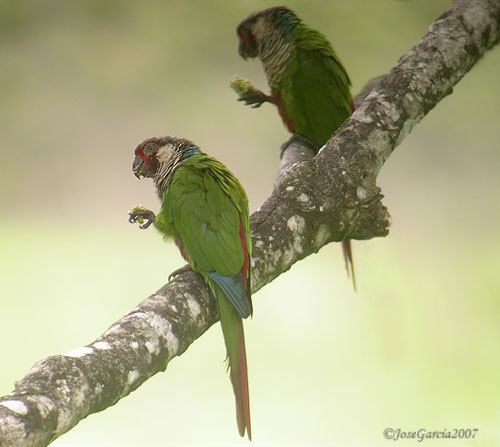
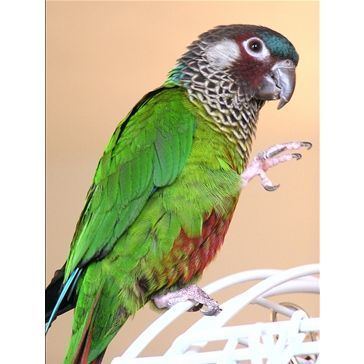
Nevertheless, the possibility that some of the above are separate biological species cannot be discounted at present. It has been suggested that auricularis should be considered a synonym of emma, but a recent review has suggested that auricularis is valid, and consequently it has tentatively been included here. Another taxon, pantchenkoi, has often been considered a valid subspecies or rarely even a separate species, but recent opinion is that it is a synonym of caeruleiceps.
Description
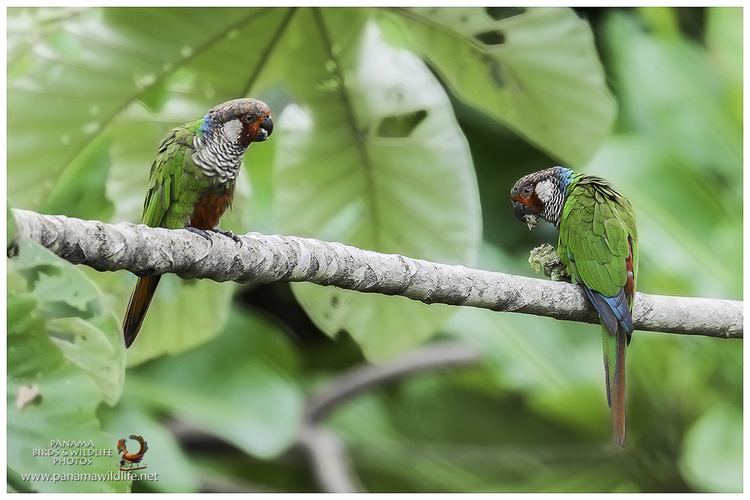
The painted parakeet has a total length of approximately 22 cm (8 3⁄4 in). As other members of the genus Pyrrhura, it has a relatively long pointed tail and a mainly green plumage. The rump, central belly and tip to the tail are maroon-red, and the primary-coverts and outer webs of the primaries are blue. Except for subandina and some eisenmanni, adults of all subspecies have red to the leading edge of the wing, but this is often difficult to see (especially when perched). The feathers on the chest are dark with broad whitish-grey tips, resulting in a distinctly scaled effect. Depending on subspecies, the face and cheeks are dusky-maroon to maroon-red (sometimes with a bit of blue on the lowermost part), except in subandina where the cheeks are bluish-green. The ear-coverts are whitish to yellowish-buff. They have blue to the forecrown and nape, although the extent of this varies and blue to the foreground is typically barely visible in eisenmanni. The iris is generally reported and shown as being brown or dark, but at least eisenmanni and caeruleiceps can have light cream irides.
Status
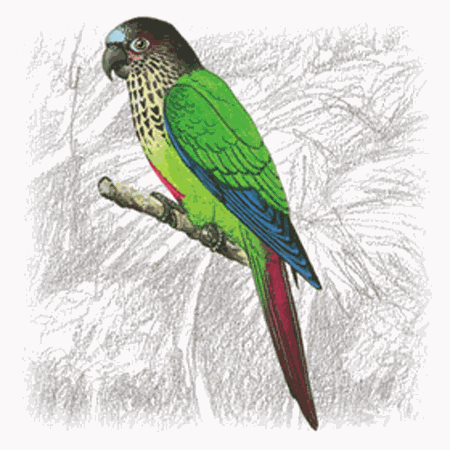
Overall, this species remains widespread and relatively common, and consequently it is considered to be of least concern by BirdLife International and IUCN. The situation for the taxa in north-western South America (caeruleiceps and subandina) and Panama (eisenmanni) is more problematic, as all have restricted distributions within regions with extensive habitat destruction, and are also threatened by capture for the parrot trade. The taxon eisenmanni is believed to have a population of a less than 2000 individuals, but it remains locally relatively common, and a part of its range is within protected areas. Living individuals of the taxon caeruleiceps were only photographed for the first time in 2007, and the only relatively well-known population (in Norte de Santander) has been estimated to consist of at least 55 individuals. Little is known about the status of caeruleiceps elsewhere, but in 2011 two previously unknown populations, likely numbering less than 120 individuals in total, were discovered in the Cesar Department. Despite surveys specifically aimed at finding the taxon subandina, there are no recent records and it is possibly extinct.
